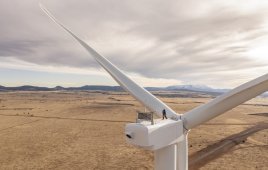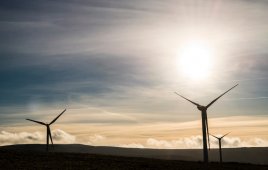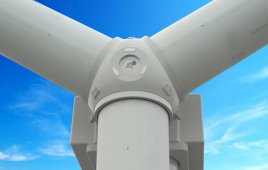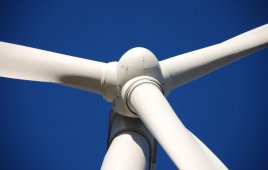Wind turbines have been maintenance nightmares for many operators over the past few years. This is to be expected when the rush to install wind turbines has avoided the usual developmental learning curve, on which new technologies mature by trial and error. Instead, many turbine designs have, until very recently, been taken from other industries with little to no modification. The gearbox was designed for railroad use, bearings were taken from a number of different industries that didn’t expose their components to such extremes. Electrical components are no different, except that they may be slightly behind the curve. Thankfully, manufacturers have noticed the high failure rates and started to do something about it.
Transformers
Historically, transformers wind farms have been conventional, off-the-shelf distribution units. But, after a relatively large number of failures, transformer manufacturers have changed their strategy and begun designing wind-farm specific transformers. Key characteristics of the new models include alterations to transformer loading, harmonics and non-sinusoidal loads, voltage variations, transformer sizing, and special requirements to handle faults. According to Tom Steeber with Pacific Crest Transformers, “A transformer designed specifically for a particular application will hold up dependably, while standard off-the-shelf transformers may fail if not designed with the needs of an application in mind.”
Transformer operating costs are also an issue the industry is addressing. ABB’s Transformer Design Specialist Doug Getson puts it into perspective, “Transformer losses are measured at load and no-load,” he says. “Even when they aren’t working hard, transformers are consuming power often priced from $2 to $8 per Watt over a 20-year equipment life. A 0.5 to1% boost does not sound like much but consider the many transformers on a wind farm and you suddenly see the operator could be losing a significant sum.”
Utilities often consider a transformer’s total cost of ownership as the unit’s price tag plus the cost of operation. So even though more efficient transformers cost more up front, over a 20-year life a typical high-efficiency transformer can save about $11,000. Now multiply that by the number of turbines on the farm and there’s substantial savings.
Other Electronics
Other electronic adaptations have resulted in similar lackluster performances, and have subsequently been through a redesign as well. For example, Eaton Corp. has designed a 38-kV vacuum circuit breaker specifically to handle the fluctuations inherent in wind systems. This design offers added capabilities such as capacitor switching duty, transformer secondary fault protection, and high operating endurance.
Similarly, Pfannenberg USA has designed thermal management systems to help keep electronic products within a desired temperature. The DTS 3000 series cooling units offer high ambient temperature performance designed with internal airflow paths that support natural convection and eliminate hot spots within turbine control panels. Pfannenberg is also currently developing and testing 48-V units for special high-frequency vibration applications.
Filed Under: Turbines





go for wind energy!